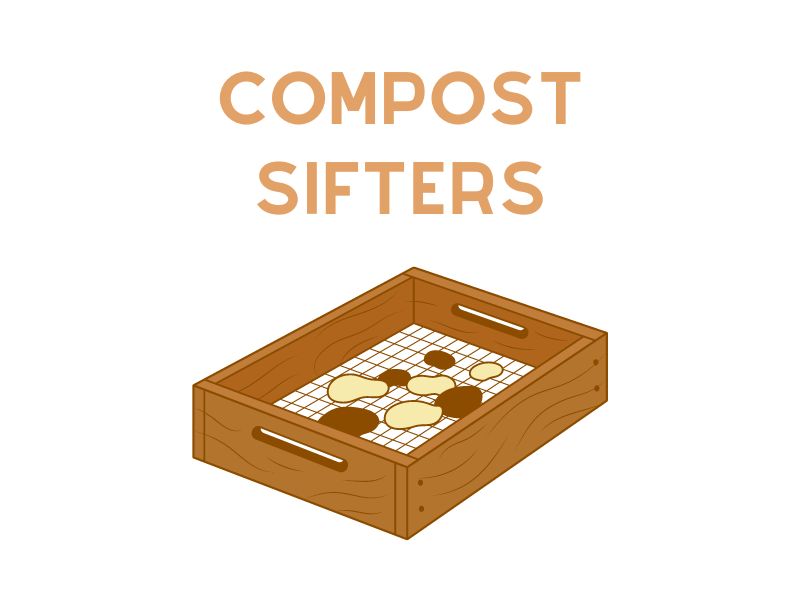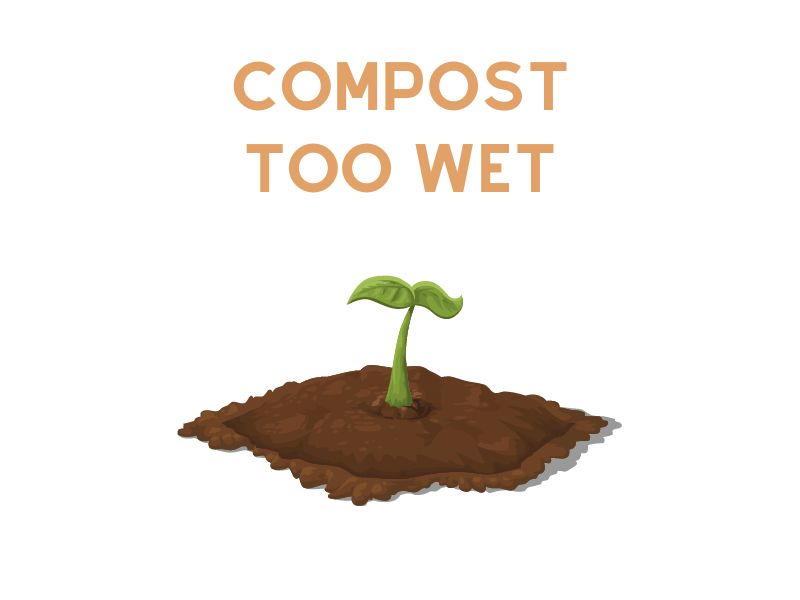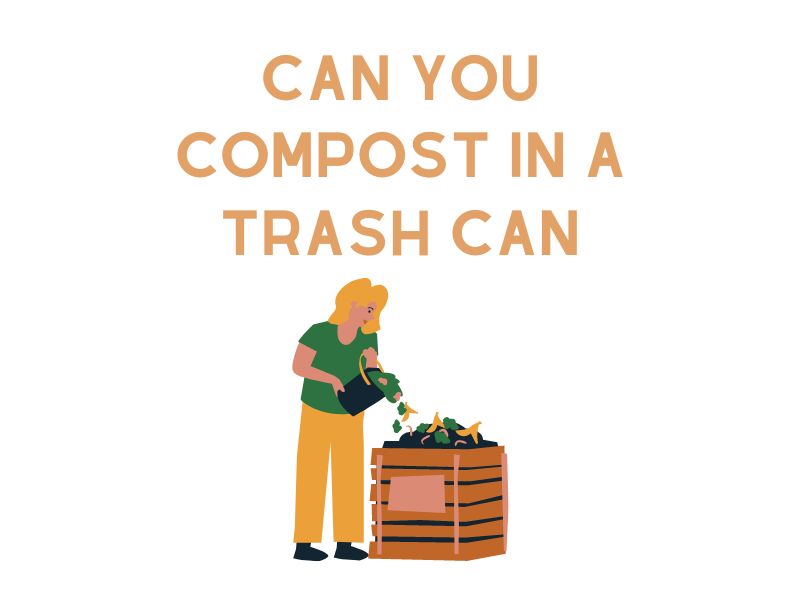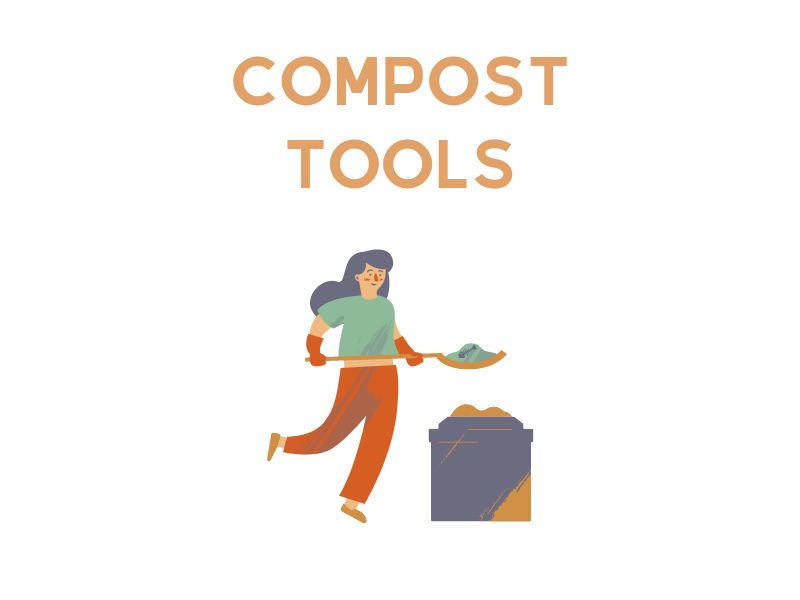In the world of gardening and sustainable living, composting has carved out a pivotal role, transforming what we once considered waste into a powerhouse of nutrients for our plants. This “black gold,” as many garden enthusiasts like to call it, forms the bedrock of a thriving garden. Yet, the process from kitchen scraps and yard waste to this valuable organic matter isn’t always neat and tidy. Among twigs, uncomposted items, and other debris, lies the smooth, rich compost that our plants crave. This is where the humble yet indispensable compost sifter enters the narrative. Designed to refine and enhance the quality of compost, this tool ensures that your garden receives only the finest, most nutritious organic matter. In this article, we delve into the world of compost sifters, exploring their purpose, the various types available, and their profound impact on gardening.
What is a Compost Sifter?
A compost sifter, in its essence, is both a gardener’s sieve and a fine-tuner for organic compost. It operates on a straightforward principle: separating the wheat from the chaff, or in this case, the finely decomposed matter from the still-remaining chunky debris. Structurally, it comprises a frame, usually made of wood or metal, holding a mesh or screen in place. As compost is poured onto this mesh, the sifter is shaken or stirred, allowing the finer particles to fall through while retaining the larger, undecomposed materials. The result? A purified, smoother compost free from unwanted materials such as sticks, stones, and larger organic chunks that haven’t yet fully broken down. This refining process ensures that garden beds are graced with only the finest textured, debris-free compost, providing optimal soil health and plant growth conditions.
Why Use a Compost Sifter?
The composting journey is a rewarding one, where organic waste metamorphoses into a rich, life-giving substance for our plants. However, as with many natural processes, composting can be messy and imperfect. This imperfection manifests as twigs, bits of paper, clumps, and other larger debris that don’t break down at the same rate as softer materials. Here’s where the compost sifter becomes indispensable:
- Refined Texture: Compost, when sifted, boasts a smoother and more consistent texture. This fine consistency ensures an even spread when mixed with soil, aiding in uniform root growth and nutrient absorption. Unsifted compost might have clumps that can create air pockets, which can be detrimental to delicate plant roots.
- Purity and Quality Control: A sifter acts as a quality control tool. It filters out unwanted materials like stones, plastic fragments, or any other foreign objects that may have inadvertently found their way into the compost pile. By ensuring these contaminants are kept away from your garden beds, plants are given an environment free from potential hindrances.
- Acceleration of the Composting Process: Nature breaks down smaller particles faster than larger ones. When you sift out larger chunks from your compost, you can return them to the compost pile for further decomposition. This iterative process ensures that every batch of compost you produce gets finer over time, optimizing the decomposition rate and reducing the time it takes to produce finished compost.
- Aesthetic Appeal: For gardeners who also value the aesthetics of their garden, sifted compost ensures a neat, uniform look when used as a mulch or top layer, enhancing the overall appeal of garden beds.
In essence, using a compost sifter is about embracing efficiency and quality, ensuring that the fruits of our composting labor are of the highest standard for our beloved plants.
Types of Compost Sifters
The composting community has birthed a range of sifter designs to meet varying needs, garden sizes, and individual preferences. While the core function—filtering out undesired materials—remains consistent, the operation and efficiency can differ substantially between types. Here’s a deep dive into the primary kinds of compost sifters:
- Handheld sifters:
- Description: These are compact devices, much like large kitchen sieves, designed for small-scale gardening.
- Usage: Simply load with compost and shake over a container or directly onto a garden bed. The mesh screens out larger materials, allowing fine compost to fall through.
- Ideal For: Small gardens or for gardeners who produce limited compost. They’re also perfect for those who prefer hands-on involvement and don’t mind a bit of manual effort.
- Pros: Portable, affordable, easy to store.
- Cons: Not suitable for large volumes, can be labor-intensive.
- Rotary/trommel sifters:
- Description: These are cylinder-shaped sifters that sit on a frame. The cylinder rotates, often manually, though some advanced models might be motorized.
- Usage: Load compost into the cylinder, rotate it, and the finer particles fall out through the mesh while larger chunks remain inside.
- Ideal For: Medium to large gardens, especially for those who prefer a balance between manual and automated processes.
- Pros: Can handle larger volumes than handheld sifters, more efficient in separating compost.
- Cons: Takes up more space, and can be pricier than basic models.
- Stationary box sifters:
- Description: These consist of a frame, typically wooden or metal, with a mesh bottom. They don’t have any moving parts.
- Usage: Position it over a wheelbarrow or container, shovel compost onto the mesh, and manually push or rub the compost to sift it.
- Ideal For: Those with medium-sized gardens who need more volume than handheld sifters but don’t want to invest in rotary models.
- Pros: Sturdy, can handle a decent volume, offers a balance between price and efficiency.
- Cons: Still requires manual effort, bulkier than handheld models.
- Motorized sifters:
- Description: High-capacity sifters with an electric or gasoline-powered engine to automate the sifting process.
- Usage: Load the compost, turn on the motor, and the machine efficiently sifts the compost.
- Ideal For: Large-scale gardening, commercial gardens, or community composting endeavors. It’s for those who prioritize efficiency and time-saving.
- Pros: Highly efficient, requires minimal manual effort, can handle significant compost volumes.
- Cons: Expensive, requires a power source, is not portable, and takes up more space.
Choosing the right sifter depends on your compost volume, how hands-on you prefer to be in the process, budget considerations, and the available space for storing such equipment. Whatever type you opt for, the goal remains the same: a finely sifted compost ready to nourish your garden.
5 Best Compost Sifters
In the diverse marketplace of gardening tools, various compost sifters stand out based on their efficiency, design, and user reviews. While the following brands and models are fictional for this exercise, they can serve as a template for what to look for in real-world options.
- GreenGrow Handheld Sifter:
- Description: A compact sifter built with sturdy materials, designed with ergonomics in mind.
- Features: Lightweight frame, rust-resistant mesh, and comfortable grip handles.
- Ideal For: Small garden setups or those who produce limited compost.
- Pros: Portable, affordable, and perfect for quick sifting tasks.
- Cons: Limited capacity; not suitable for large compost batches.
- CompoTrom Rotary Sifter:
- Description: An efficient mid-range sifter featuring a manually rotatable cylinder.
- Features: Smooth rotation mechanism, adjustable mesh sizes, and a durable frame.
- Ideal For: Medium to large gardens requiring frequent compost sifting.
- Pros: Efficient separation of compost, ability to handle larger volumes than handheld models.
- Cons: Occupies more space; requires manual rotation.
- EarthBox Stationary Sifter:
- Description: A robust box sifter made of quality wood or metal, offering both functionality and aesthetic appeal.
- Features: Fine-to-medium mesh bottom, sturdy legs for elevation, and a spacious sitting area.
- Ideal For: Gardeners who need a balance between volume and hands-on involvement.
- Pros: Stability during use, large sifting surface, aesthetically pleasing.
- Cons: Requires manual effort to push/rub the compost through.
- GardenMaster Pro Motorized Sifter:
- Description: A top-tier motorized sifter designed for efficiency and large volumes.
- Features: Adjustable mesh sizes, a powerful motor for quick sifting, and safety features.
- Ideal For: Commercial gardens, community composting setups, or large estate gardens.
- Pros: Extremely efficient, minimal manual effort, high capacity.
- Cons: Higher price point, requires electricity or gasoline, not as portable.
- SoilSieve Compact Sifter:
- Description: A versatile sifter catering to both beginners and experienced gardeners.
- Features: Interchangeable mesh sizes, easy-to-clean design, and a foldable structure for storage.
- Ideal For: Those looking for a balance between price, efficiency, and storage considerations.
- Pros: Offers flexibility in sifting granularity, budget-friendly.
- Cons: Not as durable as some high-end models.
When choosing a compost sifter, it’s essential to consider not just the product’s features but also its alignment with your gardening needs, compost volume, and storage space.
How to Make a Compost Sifter
Building your own compost sifter can be a rewarding DIY project, offering you a cost-effective and customizable tool tailored to your garden’s requirements. Here’s a step-by-step guide to crafting a basic wooden frame compost sifter:
Materials:
- Wooden planks or 2x4s: For the frame.
- Mesh wire or hardware cloth: Preferably with a grid size of 1/4 inch for general-purpose sifting.
- Nails or wood screws: For joining wooden pieces.
- Staples or U-nails: To secure the mesh to the frame.
- Saw: To cut the wooden planks.
- Hammer or screwdriver: Depending on your choice of nails or screws.
- Measuring tape: To ensure accurate dimensions.
- Pencil: For marking measurements.
Procedure:
- Decide on Dimensions:
- Determine the size of your sifter based on your needs. A standard size could be 2×2 feet, but you can adjust it as per your preference.
- Cut the Wood:
- Using the saw, cut the wooden planks or 2x4s to the desired length and width.
- Ensure that you have two pieces for length and two for width.
- Construct the Frame:
- Lay out the wooden pieces to form a rectangle or square, depending on your desired shape.
- Join each corner using nails or screws, ensuring the frame is sturdy and the joints are at right angles.
- Measure and Cut the Mesh:
- Roll out your mesh wire or hardware cloth over the frame, ensuring it covers the entire area with a little extra on all sides.
- Using wire cutters or scissors, cut the mesh to size.
- Attach the Mesh:
- Place the cut mesh over the frame, ensuring it’s taut and covers all sides.
- Begin stapling or nailing (using U-nails) the mesh to one side of the frame. Stretch it tightly as you progress to the opposite side to prevent sagging.
- Secure the mesh on all four sides, ensuring it’s stretched tight and uniformly across the frame.
- Finishing Touches:
- Trim any excess mesh wire that protrudes beyond the frame.
- Sand any rough edges on the wood to prevent splinters.
Usage:
To use your DIY compost sifter, place it atop a container, wheelbarrow, or directly over your garden bed. Shovel compost onto the mesh and either shake the frame or use your hands to rub the compost back and forth, letting the finer particles fall through while larger debris remains on top.
Creating your own compost sifter not only provides a sense of accomplishment but also ensures you have a tool precisely tailored to your gardening needs. With regular maintenance, it will serve you for many gardening seasons to come.
Conclusion
Compost sifting, though sometimes overlooked, stands as an integral aspect of the gardening process. This final step in the composting journey ensures that the hard work gardeners invest in collecting waste, maintaining compost piles, and awaiting decomposition culminates in the best possible end product: a nutrient-rich, fine-textured compost free from undesirables.
The value of a compost sifter extends beyond mere aesthetics. The consistent texture aids plants by ensuring even root growth and nutrient absorption. Plus, by removing larger debris, gardeners ensure that their soil remains uncompromised by potential contaminants.
In today’s market, there’s a plethora of options catering to every type of gardener—be it the small urban gardener who leans towards a handheld sifter or the commercial farmer who sees the benefit in a motorized unit. But, as with many things in the gardening realm, the satisfaction of creating a DIY sifter tailored precisely to one’s needs holds its unique charm.
Ultimately, whether you purchase or craft your compost sifter, its value is undeniable. Through refined compost, we don’t just nurture our gardens; we build ecosystems where plants thrive, and in return, they nourish our souls and our plates. Embracing compost sifting is, at its heart, a commitment to excellence, ensuring that every scoop of compost laid in the garden is a testament to the gardener’s dedication to optimal plant health and sustainable practices.





